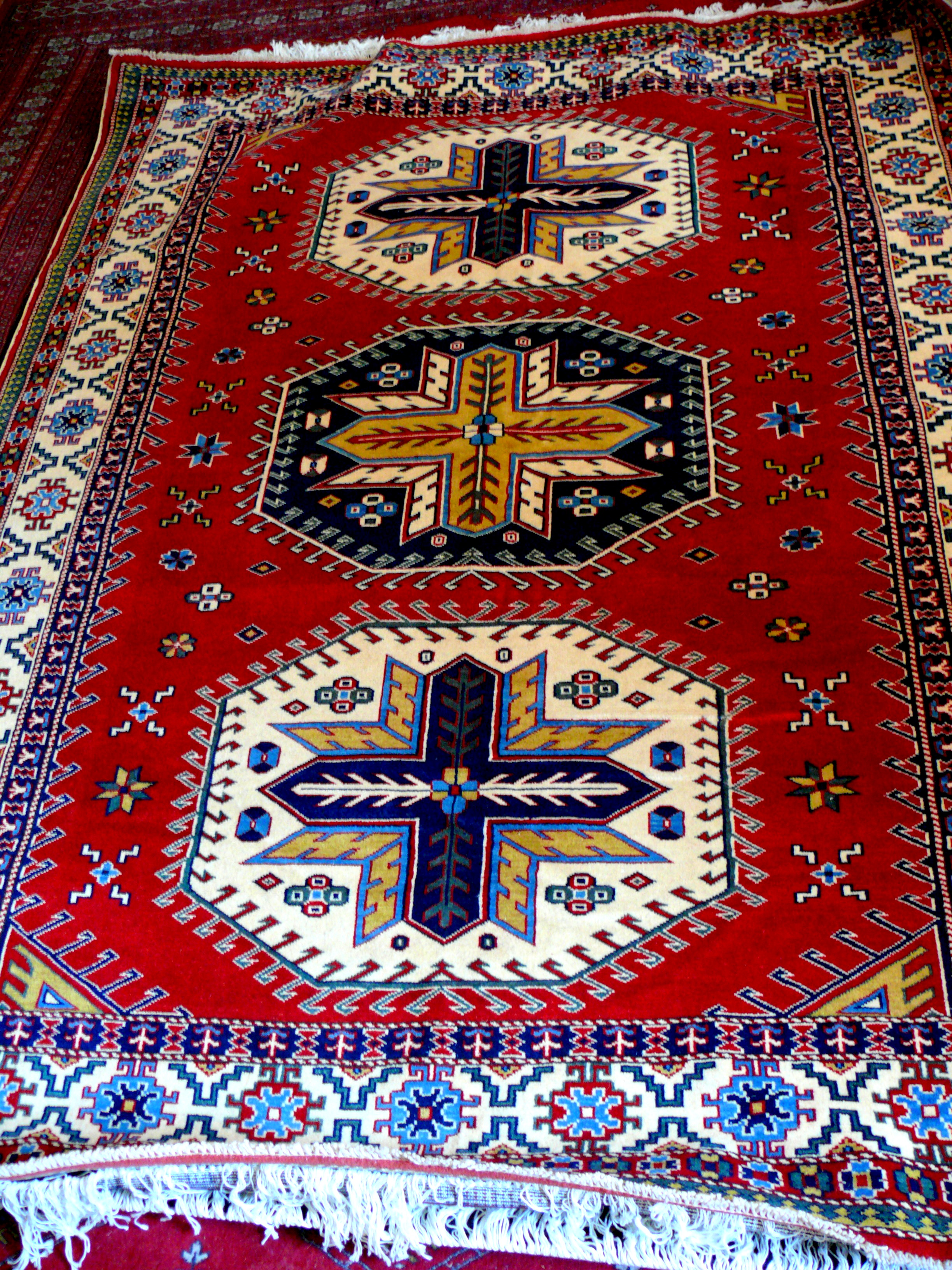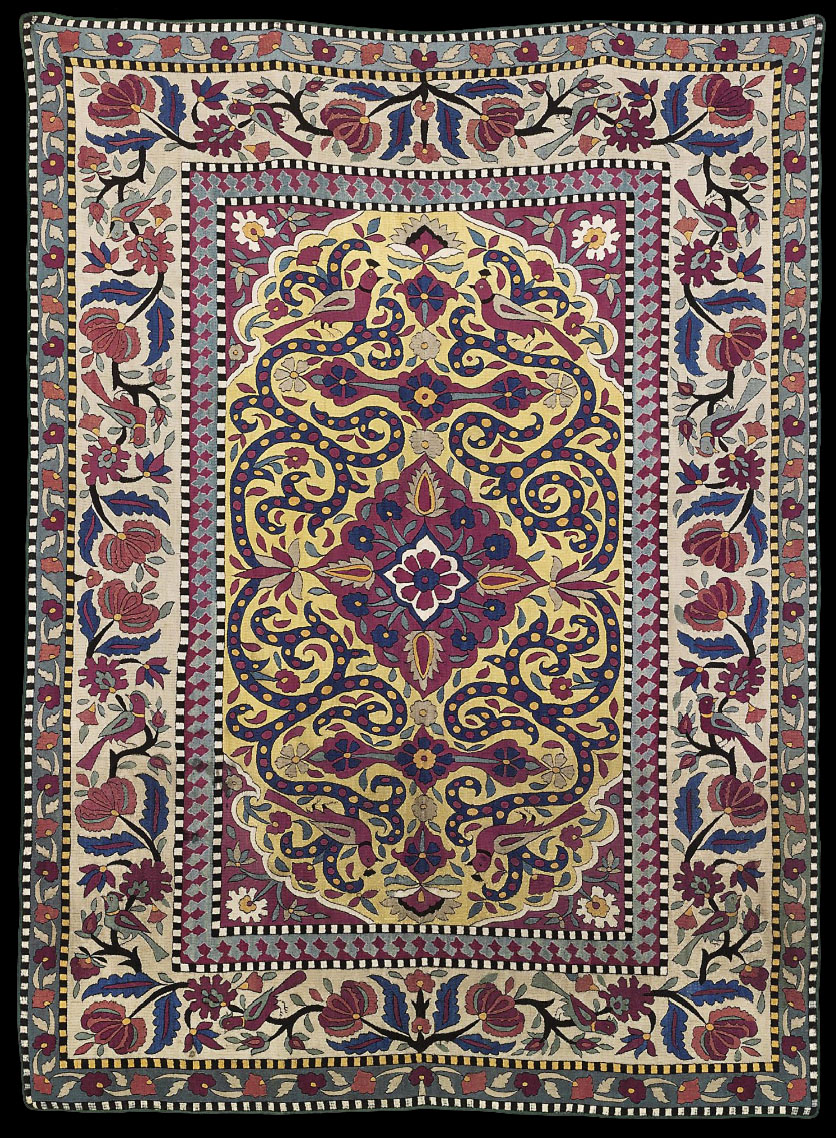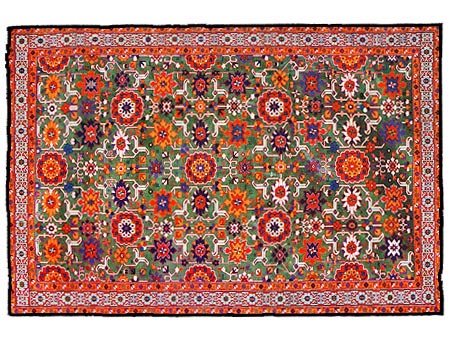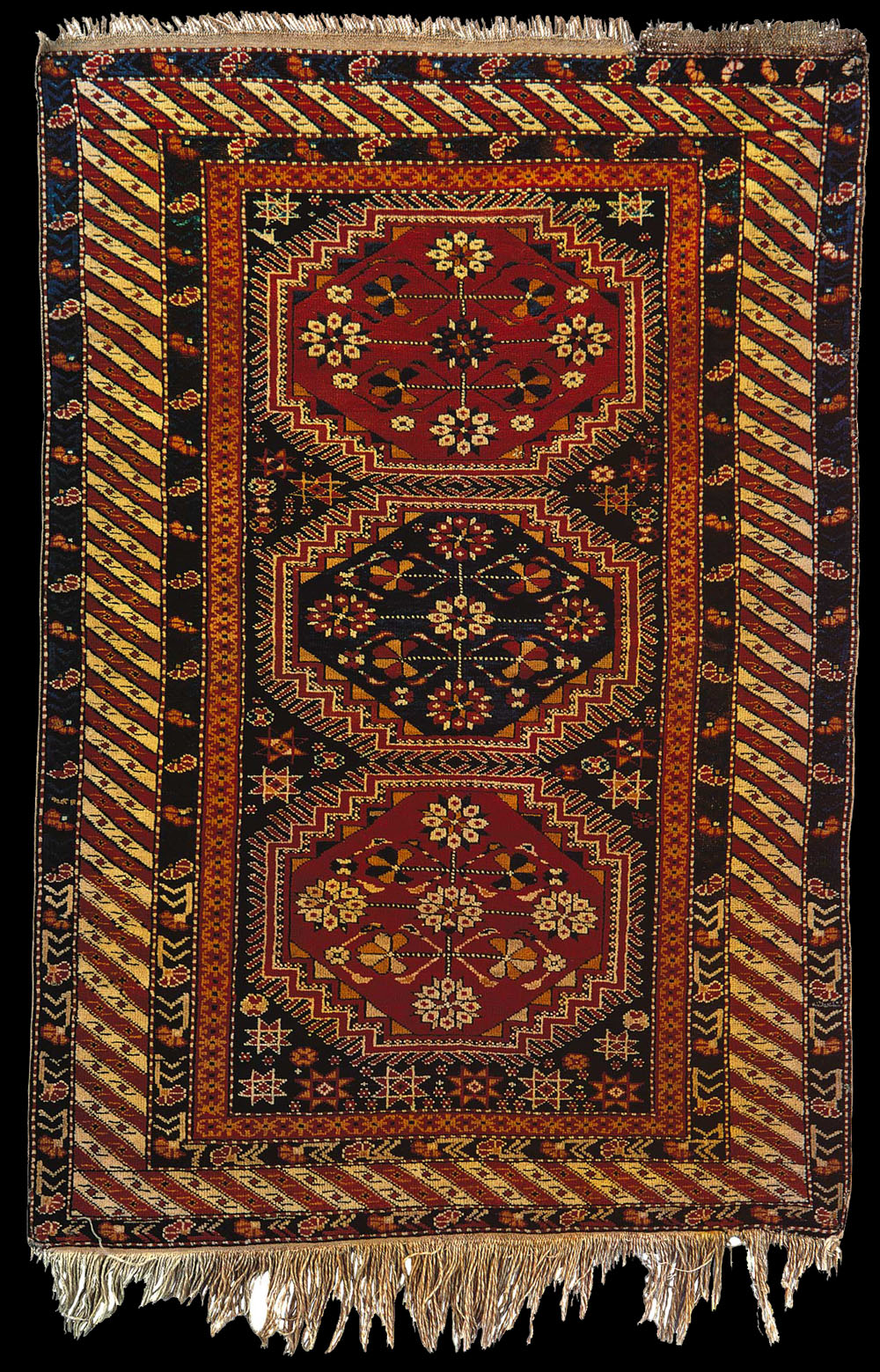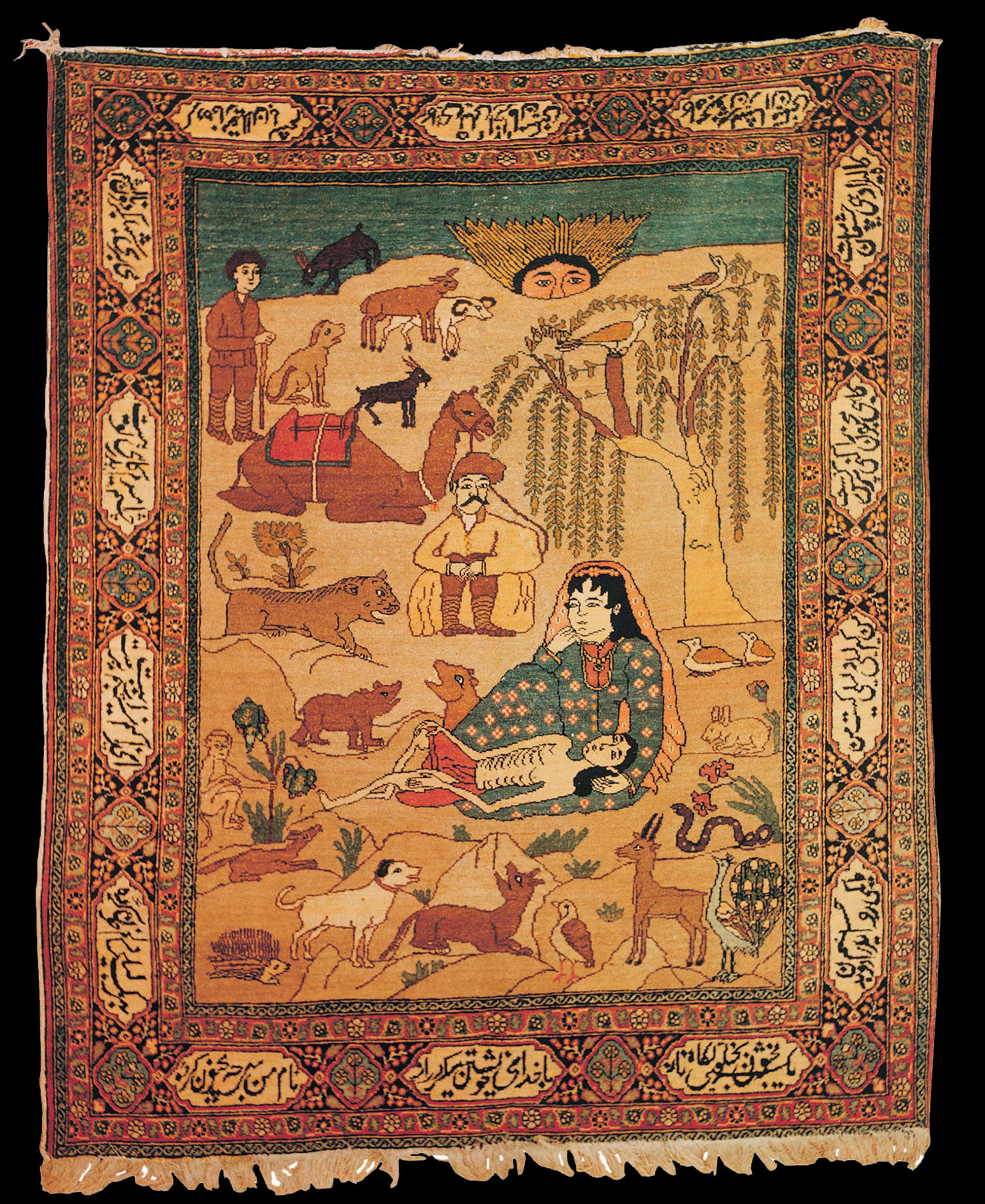Azerbaijani rug
The Azerbaijani carpet is an important part of Azerbaijan (Azerbaijan and South Azerbaijan ) art and culture. Since ancient times it is mentioned in various places, and is also known since the Renaissance in Europe.
Early evidence
The first mentions are found in ancient authors such as Xenophon, as well as in historical chronicles and travelogues of Arab scholars such as al-Tabari and Al - Muqaddasi. He will also be represented in poetic works of Nizami, describe Chaqani, as well as images from the time of the Renaissance, such as Hans Holbein, Hans Memling and Carlo Crivelli.
Differences of carpets
According to their artistic and technical features are divided Azerbaijani carpets in four different groups, corresponding to the four regions in which they are produced:
- Guba - Shirvan,
- Ganja Gasach
- Karabakh
- Tabriz
Schirwanteppich
The Schirwanteppiche are woven manually and come from the Shirvan region in south-eastern Caucasus. In contrast to the rather small carpets from Baku, the around the city Salyan long from the southern part of the area and narrow, so have the shape of the rotor. Small prayer rugs, the popular models with the so-called Butaornament (leaf shapes ) on a blue background, are produced in the city Marasa. They are usually made of wool, but there are also some with a frame made of cotton.
Rug Namas, 1875
Schemachasumachteppich, 19th century
Schemachateppich, 1937
Qubateppich
The Qubateppiche originate from the area around the city of Quba, which lies in the northern Caucasus in Azerbaijan. They are woven in different villages since the mid-19th century. These rugs are difficult to manufacture than because of their geometric floral pattern on a blue or cream background. The carpets from the village Gonagkend have in the middle of a large medallion, while the Persian carpets from Karagashli Elemante in the carpet font have ( ornamental plants, vines and cancers). The widespread so-called Caucasian red carpet field, running in Soumach weaving technique that dates back to the city Qusar. Historical Caucasian rugs from the 17th and 18th centuries often show dragons, Persian geometric patterns and sometimes reach lengths of up to six meters.
Uzundereteppich, 19th century
Pirabadilteppich
Examples of carpets from Karabakh
Chanligteppich from Shusha, 19th century
Chanligteppich, 19th century
Drachensoumachteppich with s- shaped kites
Schaddateppich
Kasim Ushag carpet
Täbristeppiche
Sheikh Sefi rug, 1539
Agadschliteppich
Tabristeppich in Paris
Tabristeppich in Budapest
Karadagteppich
Karadschateppich
Gasachteppich
Gasacheppiche are woven by the rural population in western Azerbaijan. But even in northern Armenia and the adjacent southern part of Georgia they are produced. The Gasacheppiche consist mainly of wool, and have symmetrical layered shiny nodes. Predominant colors are red, blue and ivory with simple patterns, and up to three medallions or central squares. The carpets are rarely larger than two meters, there are also small prayer rugs.
Salachliteppich
Schichliteppich
Garatschopteppich
Fachraliteppich
Deweliteppich
Gäncäteppich
These rugs have simple square pattern and rich colors. Often they have octagonal pattern, stars and three geometric medallions along the longitudinal axis. Typical colors are blue, dark blue and red. Older carpets are made entirely of wool, recent specimens reported layered cotton nodes.
Palas


